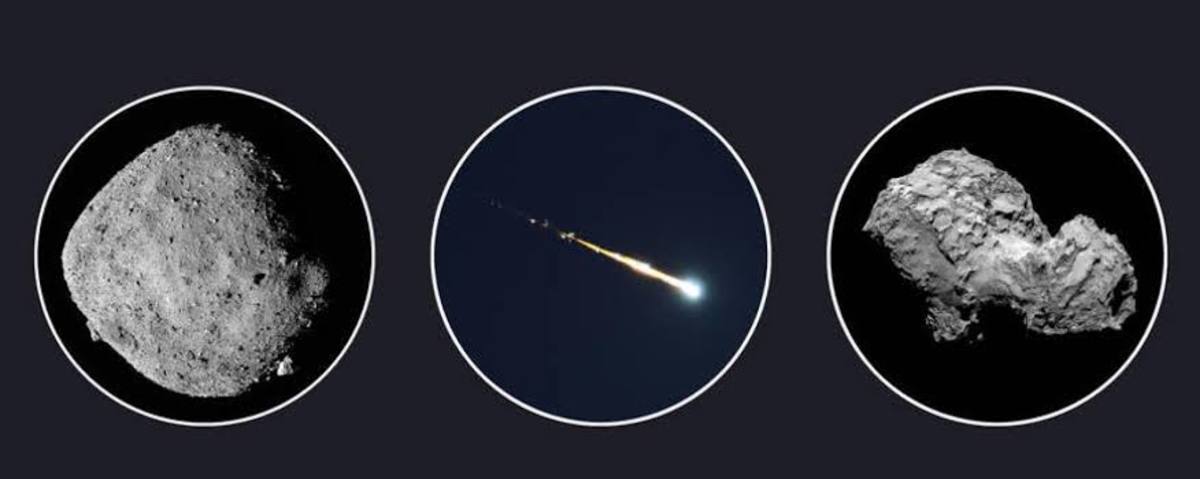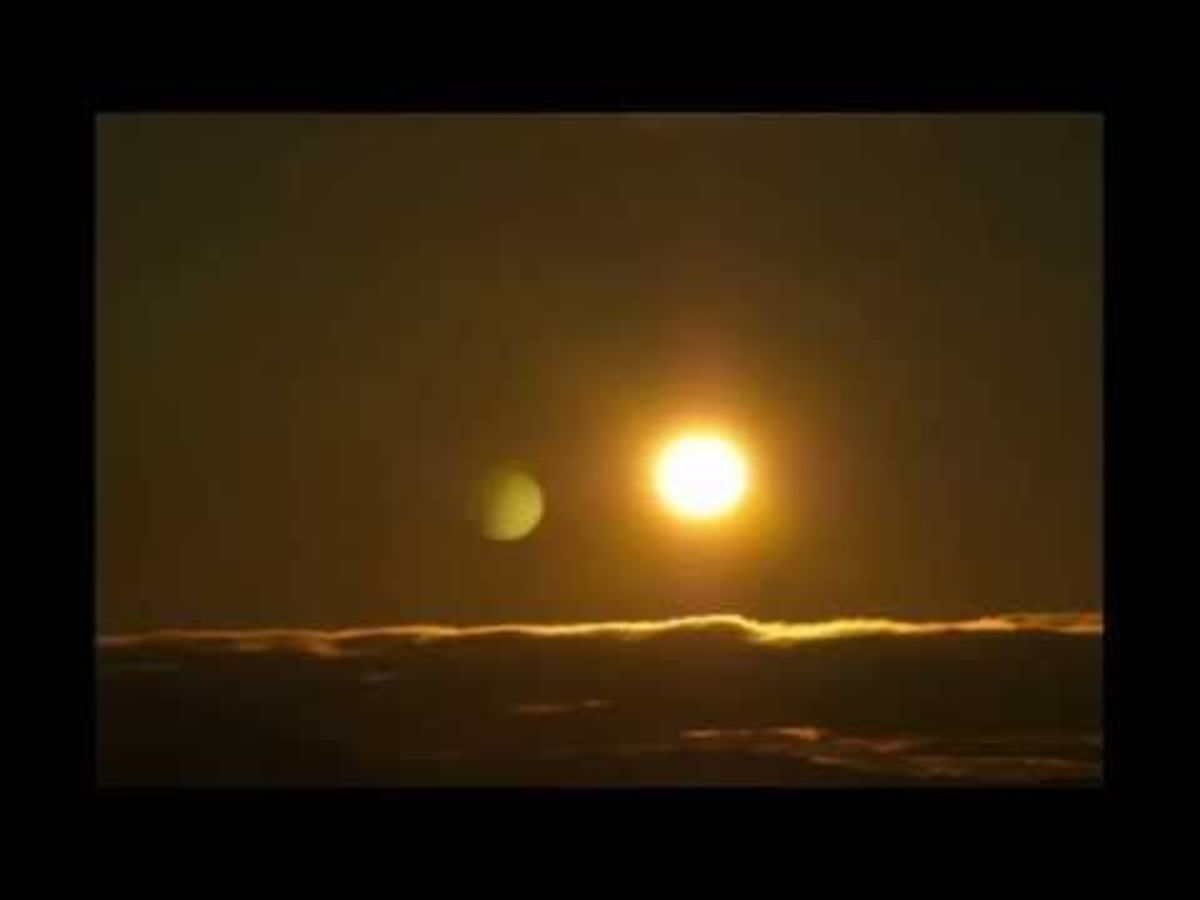Viewing Meteor Showers
Viewing Meteor Showers
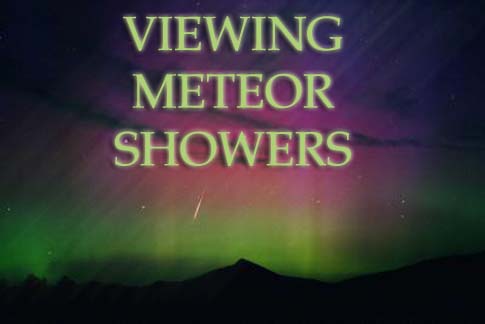
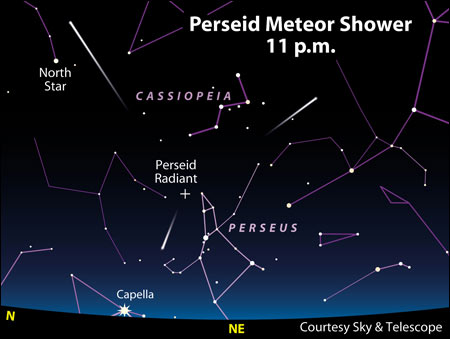
2009 Orionids Time Captures
Haley's Comet
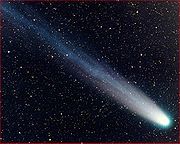
What are Meteors?
Meteors are rocky or metallic bodies that formed at the beginning the solar system, they are what was left over after the planets were formed. Many meteors are just material from comets that has left a trail of rocky or dusty debris when we pass through it's old wake. Meteors can range in size from a grain of sand to several miles across, larger meteors in space are known as asteroids. An asteroid becomes a meteor when it falls into the Earth's atmosphere creating a glowing plasma tail of fiery material visible for several miles above the Earth's surface. Meteors are sometimes called falling stars because of they way they seem to just appear out of the sky at night and fall to Earth. Meteors travel at very high speeds of up to several thousand miles per hour and when they enter our atmosphere the friction of even a small fast moving object can create such intense heat that it is visible by the naked eye. Meteors also cast a radio glow or static on radios when they burst through the ionosphere, this causes static when one listens to a radio when a meteor shower is taking place.
What Are Comets?
Comets are large rocky ice bodies that either orbit the sun in elliptical orbits that bring them into the inner solar system or they may originate in an area outside the planetary ring called the Ort Cloud. Ort Cloud objects fall into the solar system for a one time trip where they either collide with the sun, hit a planet like Jupiter, or fling back out into the dark areas of space beyond the planets. Solar System Comets like Haley's Comet orbit the sun at angles that bring them into the inner solar system after several years of swinging out of the inner solar system, when they fall back into our area of the solar system their body is heated by the solar wind and they blow off gas and dust, this creates a comets tail and what is called a coma where the gas is heated and plasma is illuminated by the sun. A comet may appear to have two tails because of the different material that is being shed by the comet itself and because the solar wind blows the plasma tail one way and the debris cloud is being left in the direction the comet is traveling.
Gemenid Meteor Shower December Radiant
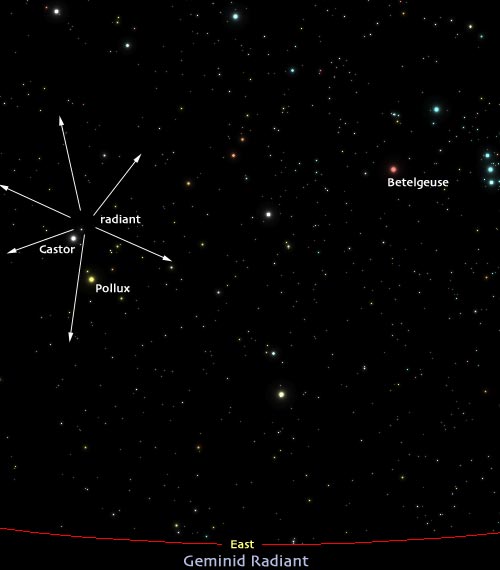
Large Meteor Over Canada (possible impact)
Meteor Blaze Over Mexico
What Is A Meteor Shower and How Do I View One?
So here is the big question right... What are meteor showers, well a meteor shower is an even that occurs when the Earth crosses the debris cloud of a comet. The Perseid's Meteor Shower is a classic example... every year the Earth passes through comet Swift Tuttle's old debris cloud left in the wake of Swift Tuttle's coma and tail. The small sand sized grains of debris rain down into our atmosphere as we pass through this cloud of material.
Most showers originate from what is called a radiant... this is a constellation or part of the sky where the meteors rain down from, though meteors may fly across the sky at different angles they will always originate from this area of the sky. If a meteor is traveling in the opposite direction then it is not from the shower you are viewing and is a rogue meteor.
Check here for information on showers marked good show for links on radiant points stats of meteors per hour and where the best viewing will be.
List of Meteor Showers Through out The Year:
- Quadrantids - Early January
- Lyrids - Early April (Comet Thatcher) Average Show
- Pi Puppids - Late April
- Eta Aquariids - Early May (Haley's Comet)
- Arietids - Late June
- June Bootides - Late June
- Southern Delta Aquariids - Late July
- Perseids - Early August (Comet Swift Tuttle) Good Show!
- Draconids - Early October
- Orionids - Late October (Haley's Comet)
- Southern Taurids - Early November
- Northern Taurids - Late November
- Leonids- Mid November (Comet Temple Tuttle) Good Show!
- Geminids - Mid December Good Show!
- Ursids - Late December
How To View a Meteor Shower:
The best way to view a meteor shower is to go out to an area void of city lights, the more open the sky the better, and do this when there is no full moon or it will limit the number of meteors you will see. I'd take a pool chair or something you can lay back on so your view is facing the radiant of the shower (you can pick up astronomy magazine at most stores and they have star charts to show you where to look). Dress warm, take blankets with you, bring something to eat and drink, I myself like to bring music (Pink Floyd's Echoes and Darkside of the Moon are always fun), Take a pad of paper and write down how many you see. This is one astro event that anyone can enjoy.
Also visit: Meteor Facts by: skyfire
Meteorites
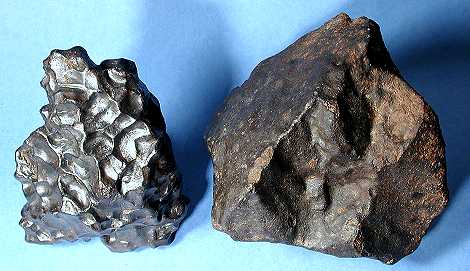
Meteorites
A meteorite is a meteor originating in space that has impacted the Earth's surface. Meteorites come in different classifications...
- Ordinary Chondrites are the most common making up about 73 percent of the total meteorites that reach our surface.
- Carbonaceous Chondrites are rare and carry carbon from the early formation of the solar system and only account for 3 percent if meteorites found.
- Achondrites are meteorites that come from other bodies in the solar system like the Moon and Mars. They make up 7 to 8 percent of the total meteorites found. These meteors are also called Stony Iron meteorites and are crystaline meteorites.
- Irons are crystaline in make up and resemble the outer core of the Earth.


